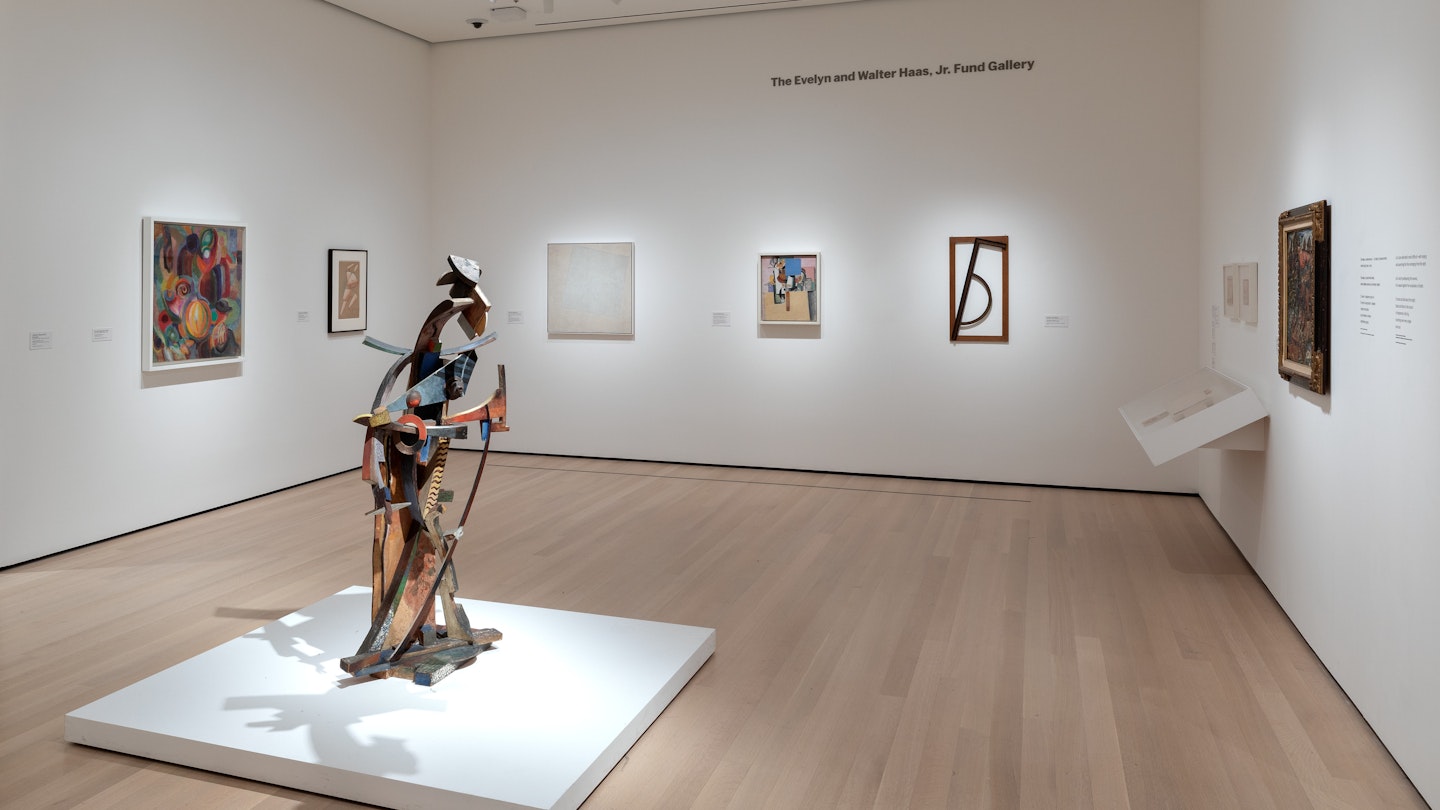In Solidarity: A Tribute to Ukrainian Artists at MoMA
Under the banner “In Solidarity,” Manhattan’s Museum of Modern Art has dedicated a collection gallery to works by artists born in present-day Ukraine.
The gallery debuted on MoMA’s fifth floor in late March, highlighting pieces in multiple mediums from artists of varying backgrounds, including the renowned New York street photographer Weegee, aka Arthur Fellig, born in what was then Austria-Hungary (later Poland, and eventually Ukraine); the avant-garde Russian painter Kazimir Malevich, born in Kyiv; and the Russian sculptor Louise Nevelson, known for her monochromatic wood installations, also born in Kyiv.
Artistic Roots and Political Context
In a region where international borders shift with the political winds, it’s no surprise that many of the artists featured have Russian, Soviet, and Polish roots. However, you won’t find those origins noted in the display copy – a conscious decision on the part of the curatorial team. “Nationality, which so happens to be where a person’s passport is, doesn’t give the full picture,” MoMA’s chief curator of painting and sculpture, Ann Temkin, explained.

A Statement of Solidarity
As the gallery’s wall text explains, some of the featured artists grew up in Kyiv; others found themselves in creative hubs like Paris, Berlin, Moscow and — particularly those of Jewish descent seeking refuge from persecution — New York. However, they were all brought together here “as a statement of solidarity with, and in tribute to, the people of Ukraine.”
Since the Russian attack, numerous museums from Lviv to Kharkiv to Kyiv have been working tirelessly to secure their treasures, hastily dismantling exhibitions and relocating art and artifacts to safety, whether that be in underground bomb shelters or safe hands overseas.
The Impact of War on Art and Culture
At the literary museum in Kharkiv, director Tanya Pylypchuk noted that “the most valuable part of the collection” — including documentation that showed “Ukraine wanted to be part of Europe, not Russia” — was shifted to a bunker shortly after the war began. “Such materials were banned in the Soviet Union… Modern Russia also does not accept this version of Ukrainian history,” she elaborated.
“This is a war against our history, our culture,” Ihor Poshyvailo, director of Kyiv’s Maidan museum, added. Consequently, Ukrainian communities are mobilizing to protect both their heritage and artistic future. This includes concerned citizens in Lviv who wrapped the city’s centuries-old statues in plastic, as well as curators who managed to transport unique artworks across borders to safety.

Artists Responding to Conflict
Moreover, the cultural sector has seen an outpouring of outrage over the invasion, with artists globally voicing their objections. Famed cellist Yo-Yo Ma performed in unpublicized protest in front of the Russian Embassy in Washington, DC, holding a sign reading Zelensky Way. “The thing I remember him saying was ‘everyone has to do something,” a local resident reported.
A few days earlier in New York, a group of Ukrainian New Yorkers staged a protest at the Guggenheim Museum, releasing hundreds of paper planes bearing anti-war messages. “We wanted to show people what it feels like when danger comes from the sky,” one organizer explained.

Ongoing Support for Ukrainian Culture
Consequently, various international artists have withdrawn from exhibits in Russia, severing future collaborations. Additionally, some established institutions within the art community have distanced themselves from oligarch donors and trustees. Nevertheless, MoMA’s In Solidarity gallery stands out as a major museum’s artistic response.
Although its permanent collection galleries change seasonally, this isn’t the first time MoMA has rearranged for a cause. Previously, in response to President Trump’s travel ban, the museum highlighted works by artists from predominantly Muslim nations, showcasing the belief that art should foster inclusivity.




